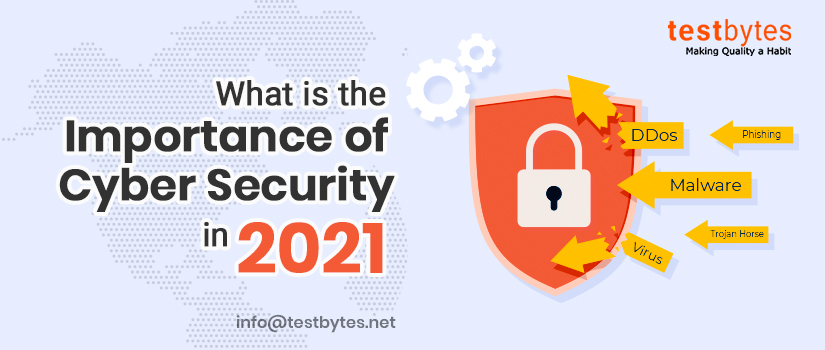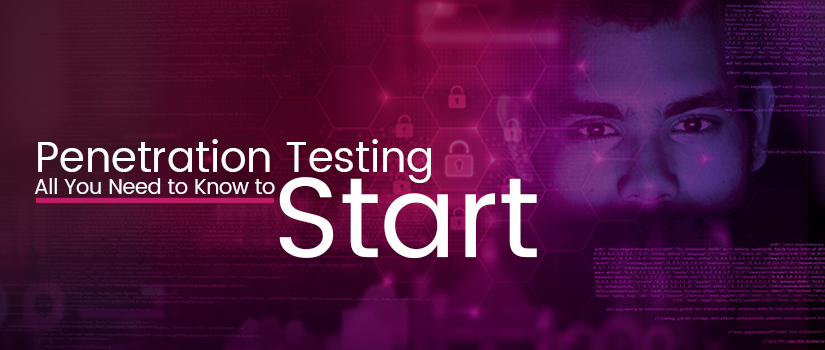A major share of companies will need extensive cyber security in 2021. You need tips and practices that can work very well. Reason? The rise of alarming attacks and their devastating effect will force companies to focus more on securing their digital domain. Let’s have a look in detail.

What is Cyber Security?
It’s a much-needed practice of safeguarding electronic systems, mobile devices, computers, servers, networks, and data. The cyberattack has become frequent and complicated. So in order to defend a system from a devastating attack many practices, skilled personnel heavy systems need to be deployed.
Mainly cyber security can be divided into 6
- Network security
- Information security
- Disaster recovery and business continuity
- Information security
- Application security
- End-user education
Why cybercrime is on rising?
It is very evident that cybercrimes are on rising. But what is causing this rise? Let us have a look at a few of the reasons for this rise:
- Technological advancement: Technology has definitely benefited us a lot. But as every coin has two sides, this too has two sides. Though technology advancement has been a boon for us, it has also increased the hacking possibilities. Technology has enabled and made it easy for hackers to access retina images, codes, advanced voice recorders, etc. Thus making it easy for hackers to fool biometric systems and bypass firewalls.
- Smaller storage space – Another major reason is the machines still have comparatively lesser storage space, making it easy for hackers to steal data.
- Complex – The complexity of operating systems, makes human brains so mistakes. And the advantage of these mistakes is taken by the cybercriminals. Negligence – Another major reason is the negligence by us. It gives hackers a great possibility to access and take control of systems. This negligence could be anything from making weak passwords, unintentionally forwarding sensitive information, etc.
- Loss of evidence – cybercrime-related evidence can be easily destroyed, hence hackers find it convenient to exploit cyberspace.
Types of Cyberattacks
There are various types of cyberattacks, through which cybercriminals can exploit cyberspace users. Some of them are:
- Denial-of-service (DoS) and distributed denial-of-service (DDoS) attacks: In such attacks, the users are restricted or denied the services.
- TCP SYN flood: Attackers flood the victim’s in-process queue with multiple requests, which fails to get a response from the target system, finally collapsing the system.
- Phishing attacks: These attacks aim to steal confidential information by pretending to be a genuine individual and asking the victim to open a malicious link.
- Spear Phishing attacks: In these attacks, the mail is aimed at a company, pretending it to be from a known individual and aims at stealing the companies confidential data.
- Malware Attack: Malwares are the code that forcefully steals the victim’s information without their consent.
- Ransomware: Ransomware stops the victim from accessing his own data until the ransom is paid.
- Drive-by attack: the malicious links are planted into the webpage, and when a person visits such a webpage, malware is installed into the victim’s system.
- Trojan Horse: Trojan Horses are another type of malicious program that pretends themselves to be useful and when a person installs them, their system is captured by Malware. They are the most dangerous malware.
- Password Attack: Most simple kinds of attack, where the attackers crack the victim’s password, hence taking control over their systems.
- SQL injections: such attacks manipulate the backend database and hence displaying certain information at the frontend, which otherwise was not intended to be displayed.
What’s the Impact of cybercrime in 2021?
Cybercrimes are affecting both individuals and institutions in many different ways. Be it stealing of business confidential data and selling it to a third party, or be it emptying someone’s bank account or defaming a person’s image using his images or social media ID.
Cybercrimes have greatly increased during this lockdown when the world is completely dependent on cyberspace. Also, the lockdown has given many people sufficient time to carry out their notorious activities.
- If we believe in the research done by the University of Maryland, a cyber-attack is carried out every 39 seconds.
- In 2019, on average 78% of organizations in the US, have witnessed a cyber attack
- Around 23% of US citizens, financial information or credit card details have been hacked.
- On average 30% of US consumers faced a data breach in 2018.
- An alarming 1000 data breaches, exposed 147 million records in 2019 that too in just initial 9 months.
- There is a steep rise in data breaches every year
- There is a 54% increase in mobile malware
Cyber attacks stats 2021
- By 2021, Cyber will cost the world $6 trillion
- By 2021 Companies have to expect ransomware attacks every second
- At present, 24,000 suspicious apps are deleted on a daily basis
- 21% of files are not protected around the globe
- 60% of frauds have a mobile phone as their origin
- Average ransomware demand will be more than $1000 by 2021
- 90% of hackers are using encryption. Making it hard to track them
- It’s expected that cyber-security awareness programs spending will reach $10 billion by 2027
- Studies have revealed that 41% have a loose end at their data protection system
- Only 25% of companies have a standalone security department

What’s the Importance of cybersecurity
With the increasing usage of cyberspace, cyber crimes too have increased. And in this pandemic, almost everything is shifted to the digital medium. From education to shopping, from business to medicine, everything is handled online. But this has given immense rise to cyber threats. Students are being victimized, financial losses have become very common, data security is now at stake, etc. Cyber threats can be a great loss both emotionally and financially. With such a rise in cyber threats, it is very important to implement cybersecurity. Some of the important measures we can take are
- educating everyone on the cybersecurity
- Parents can keep a keen check on their children’s cyber activities.
There are more such measures that we will read about going further here.
What’s the Future of Cyber Crime
1. Information wars: With the significance of data on a global scale, information wars are now becoming more common. With the present trend, it is expected to be more dominant in 2018, as well. More than data thefts for economic needs, personal data is targeted more which leaves people in a vulnerable position.
With most of the information exchange taking place online due to lockdown, chances of information wars have increased many times. Be it any business information, financial information, medical information, personal information, all are being shared through a digital medium. The hackers are taking undue advantage of the situation to exploit their victims. They are using different techniques to get hold of valuable information and exploit it to their benefit.
Attempts were made to even make the highly celebrated officials’ confidential controversial information public. As these types of wars are becoming an unwelcome reality to humiliate people, serious attention needs to be given to avoid its huge impact in the future.
2. New vulnerabilities: The innovative technologies are witnessing exponential growth and this also opens a new window for new vulnerabilities. Even before a new technology comes into the market, hackers find a way to exploit it. Since there is less expertise in new technologies, there is less expertise in protecting it from hackers or cyber threats. According to estimates from SANS, familiar risks would be the reason for at least 80 percent of cybersecurity happenings.
It should be taken care that even before a new technology is launched in the market, all the loopholes should be deeply studied and barred. Even there should be proper documentation where its users have a clear description of how to use it and protect themselves from any kind of security threats. They should be guided on all the safety measures they should follow to ensure the highest security. We can’t stop the new to evolve but we can definitely find a way out by enlightening its users on all possible security measures.
3. Concerns for big data: The new era enterprises are handling too much data every day than ever before. As data comes in new types and formats, it would be less structured, unlike conventional data.
Even when GDPR can help to handle and monitor it up to an extent, the lack of proper internal processes can pose serious cybersecurity threats to such big data. So it becomes important to get back to basics such as updating software versions and maintaining basic security hygiene.
Some of the most worrisome threats posed by big data are:
- The first one, obviously be the protection of data
- Data ownership and rights
- Lack of proper data analysts or lack of expertise.
As big data offer tremendous benefits, it’s important to find proper security measures to safeguard the use of big data and to leverage it to our benefits. Some of the common security measures we can work upon and rely on are:
- Setting up of industry standards, government rules and regulations, and share the best practices to ensure to make wiser use of big data
- To protect secure and sensitive information, Attribute-based encryption should be adopted for the information shared by third parties
- More security should be added to open source software such as Hadoop
- audit logs should be maintained for all the facets of the business
4. Cloud storage security: cloud storage is a new norm. From businesses to individuals are depending more and more on cloud storage for their data storage purposes.
With the data increasing at a tremendous rate, we need an extra and reliable storage unit to store an infinite amount of data. And cloud storage has come to our rescue.
Due to minimal storage systems, companies are now largely dependent on cloud storage for data-keeping. Cloud is more susceptible to security threats because of its structure.
There can be a serious threat to its privacy and mishandling if no proper governance is provided. Proper measures and techniques should be enforced to ensure the high-end security of the cloud.
The problems of insecure access and instability can be a threat to confidential information. Designing a cloud decision model would be a good solution in order to control the personal as well as its public use. A few steps that you can take to ensure the safety of data on the cloud are:
- As far as possible, don’t store sensitive information in the cloud.
- Be very familiar with the user agreement and how cloud storage works.
- Passwords are very important, make them strong; very strong.
- Encryption can be your security guard when storing data in the cloud.
- Prefer encrypted cloud service.
5. Internet of Things: Modern enterprises are heavily relying on internet technologies for data access and transfer. However, most of them are not so aware of the hidden problems and uses the new age technology without giving much emphasis to safety. However, the vulnerability of personal data can be a serious threat awaiting them.
The current pandemic has evolved the Internet of Things as the whole sole platform for all basic needs, be it education, financial needs, shopping desires, medical needs, business requirements, etc.
Amongst this dependency, hackers have found a golden chance to exploit data on the internet for their gruesome purposes. It has to be ensured that proper measures are to be taken while using the internet.
Apart from basic safety measures, everyone including children and adults needs to be educated on the safe use of the internet. From browsing various websites, sending data across, or playing games, everyone needs to well informed about the prospective threats of the internet.
The use of faulty communication methods and default password mechanisms are not going to do any good in the long run. Breaches of privacy can be a top cybersecurity threat in the upcoming year, as well.
6. Ransomware and Blockchain security: Ransomware is a widespread cybersecurity threat in which particular files within the infected systems would be encrypted. The users will be forced to pay big sums in order to retrieve the decrypt key. The worst part is that users will have to make the payment without any guarantee of receiving the key.

The possibilities of blockchain security can be an important phenomenon in this context. From eliminating passwords to generating fiddle proof infrastructure and superior encryption methods, this security technology would be a center of focus in 2018.
7. Wars across borders: If information over the web is not properly handled, the consequences may not always confine within the country. There is a huge chance for this insecurity to be a reason for wars across nations. Such problems would be very hard to sort out as it can cause a direct impact on the international political scenario.
In the recent past, we have come across various news where, foreign applications and software have been found keeping a keen check on the users and with a result, many applications have been banned in a few countries.
Such scenarios can take very nasty turns and can have huge repulsion. Even country sensitive information can be eyed upon by other countries and can be easily exploited to plan an attack against the first.
Countries should ensure high-end security of their internal and sensitive information. There should be proper guidelines on the usage of digital media for both authorities and the general public
8. Novel legal clauses: The government’s surveillance laws are seeing many changes and this could cause cybersecurity concerns for most companies. With the novel data protection and management rules, the finance systems of the enterprises can be impacted. The implementation as well as harmonization changes can take longer to be stabilized and this can affect a smooth flow of data in 2021.
This lag can result in cybersecurity threats. Companies should be ready to deal and act on such changes efficiently and quickly so that hacker doesn’t get a scope on entering into their systems illegally and exploiting them
In the recent past, we have come across various news where, foreign applications and software have been found keeping a keen check on the users and with a result, many applications have been banned in a few countries.
Such scenarios can take very nasty turns and can have huge repulsion. Even country sensitive information can be eyed upon by other countries and can be easily exploited to plan an attack against the first.
Countries should ensure high-end security of their internal and sensitive information. There should be proper guidelines on the usage of digital media for both authorities and the general public
9. Cybersecurity predictions: The security breaches from biometric authentication tools introduced by mobile giants are not a distant reality. The socially engineered threats are on the rise than ever before. Suspicious domain registrations as well as domain spoofing can be another important area that needs focus. The possibilities of industry-specific attacks from scammers cannot be written off.
10. Risk-based authentication tools: The previous authentication tools are designed with a general-purpose. With more and more threats being reported every day, it is alarming to design and implement some risk-based authentication tools for the job. This can fight out the known risks to some extent and provide a decent one level security from at least some of the possible breaches.
. Advancement in such technologies can definitely hamper the growth of cybersecurity threats. These technological advancements should always be a step ahead of hacking techniques to curb such risks.
11. Training for non-technical staff: In normal cases, there would be a particular group of technical staff in every company who will be responsible to take care of the cybersecurity.
As the situation is highly alarming, it is becoming important to give some basic training to nontechnical staff also regarding the first aids to tackle possible cyber attacks.
Similarly, giving sessions or seminars to common people regarding basic cyber safety can prove good to eliminate at least the basic problems.
The irony is that a large percentage of our population uses technology, but only a few are aware of cybersecurity. There should be seminars not only for the working population but also for the general public about the safe usage of the cyber world.
People perform a lot of confidential tasks over the internet without taking any security measures and hence landing themselves into cyber threats. Hence it becomes very important to educate everyone on the safe usage of cyberspace.
12. Digital ecosystems: Cybersecurity is not a simple thing as its impact can even be on wider society. Not only big companies get affected, it’s after-effects can cause long term hazards for many individuals. In a digital ecosystem, every individual has his role in the protection, security, and privacy of data.
Data analytics and data science will have a bigger role as monitoring of larger data becomes important to predict the present trends and understand human behaviors.
This understanding can play a major role in curbing many security threats, which otherwise are very prominent and put on stake the security of the individuals.
13. Artificial Intelligence: A remarkable difference in ICS Security can be witnessed with the widespread usage of artificial intelligence.
Quicker threat detection and faster troubleshooting is the key. It can replace the drawbacks of a shortage of cybersecurity staffing to a certain extent.
Whether it is a large multinational company with multiple branches across the globe or a small company with a single branch, the use of this technology can prove vital to making better out of the situation.
AI can be efficiently used to hamper cyber threats. AI has advanced multi-folds and we can mold it for making cybersecurity more strong and stringent that it becomes very difficult for hackers to crack it.
14. Security technology integration: This is going to be a game-changer in this highly alert situation. Large enterprises can rely on such mechanisms to manage situations better. With the present trend, integration hubs are on the rise. The professional services with a separate personnel manager can work wonders in helping fight the cyber attacks.

The comprehensive cybersecurity plan covers a lot of elements such as content protection, data security, privacy, IP, passwords, and encryption technology. Staying ahead of the situation helps you to take control of it and avoid the domination of fraud.
8 Tips for Cyber Security 2021
1. Establish a strong security policy among employees
2. Perform penetration testing, security audits, etc.
3. Devise a perfect action plan in case of emergency
4. Use a proper password management system
5. Have a thorough understanding of the risks involved
6. Make sure that the data is encrypted and secured
7. Make employees understand the vulnerabilities of social media
8. Secure and limit internal and external network access

Final Thoughts
Proper measures need to be taken in order to handle these concerns without making much trouble. It is becoming really important to increase the number of security experts to overcome these concerns and proper quality training needs to be given to them. More serious interventions from the government are expected to provide enough scrutiny, attention, and care.
It is not just the data privacy rights or net neutrality that needs attention; a complete shift of focus to internet security is alarming. An additional step in cyber and email security can make a positive difference in the overall productivity of enterprises in the long run.



















